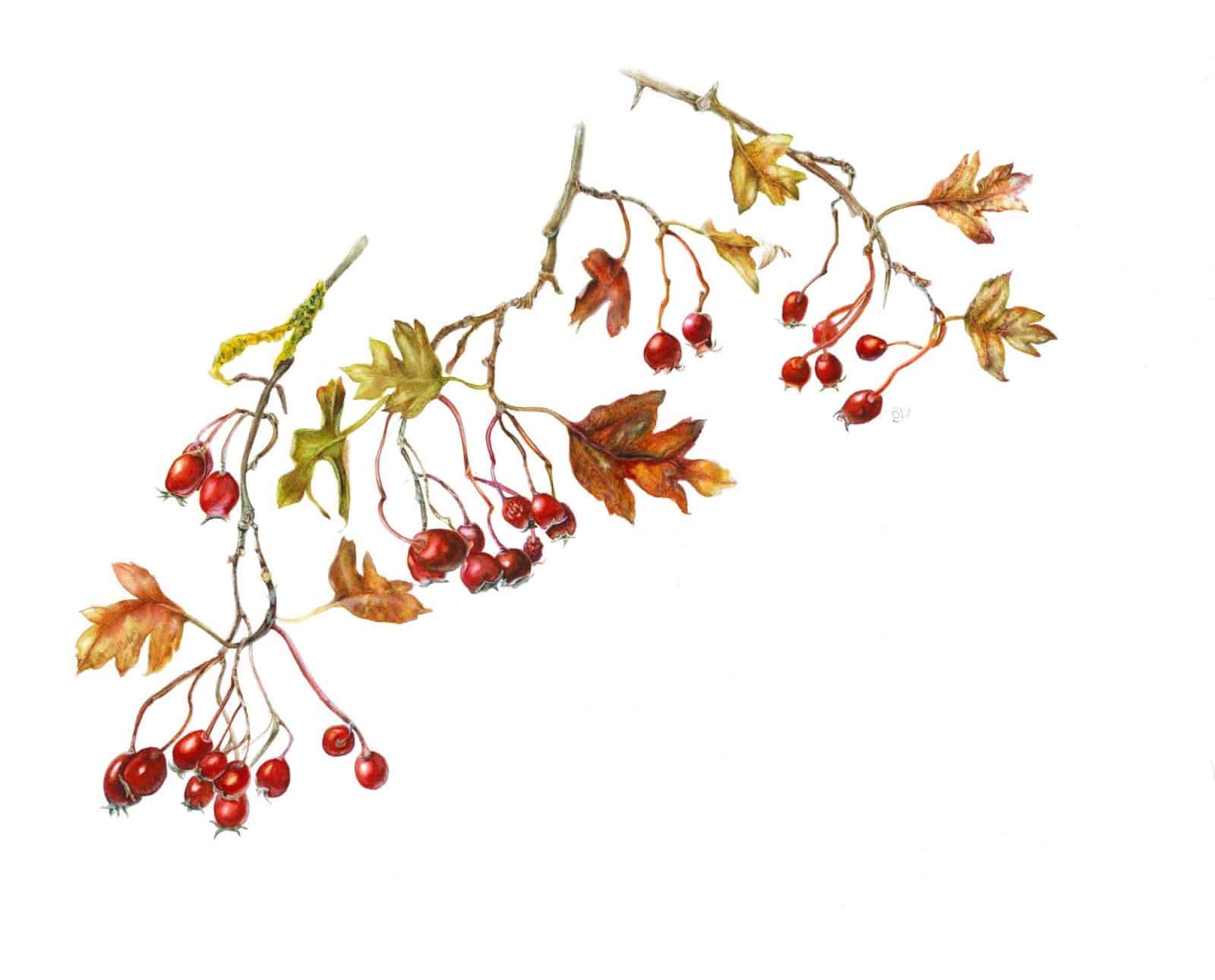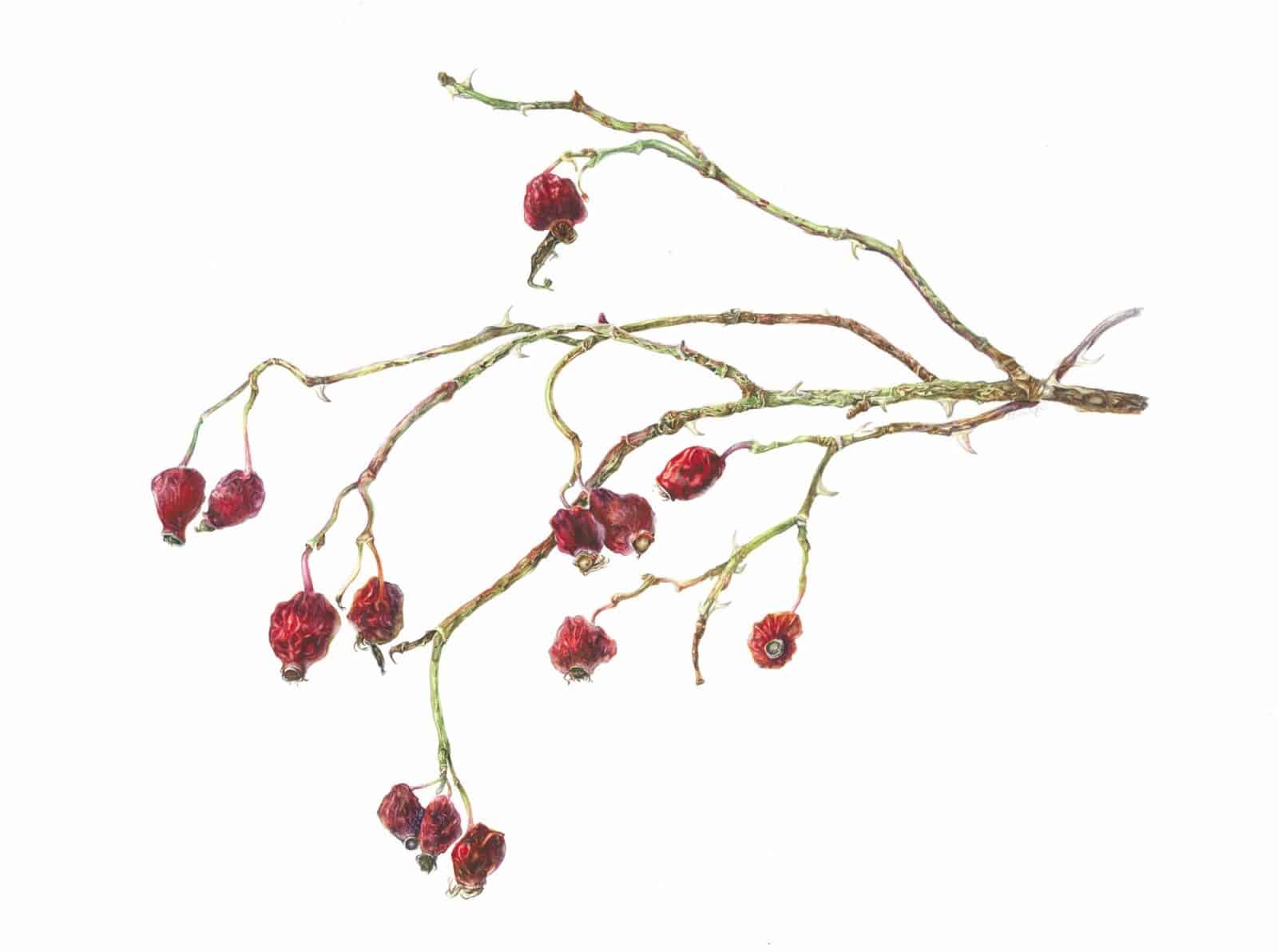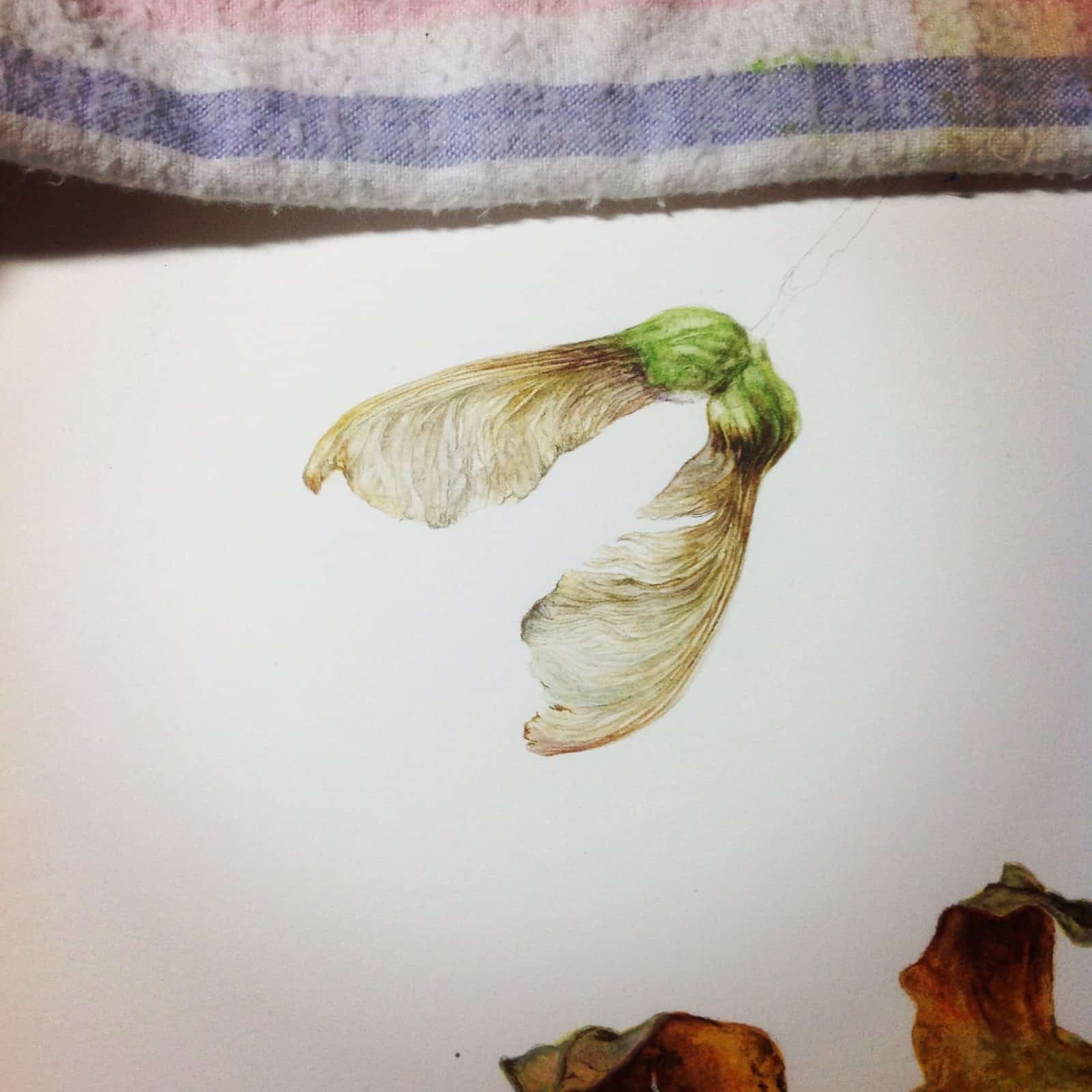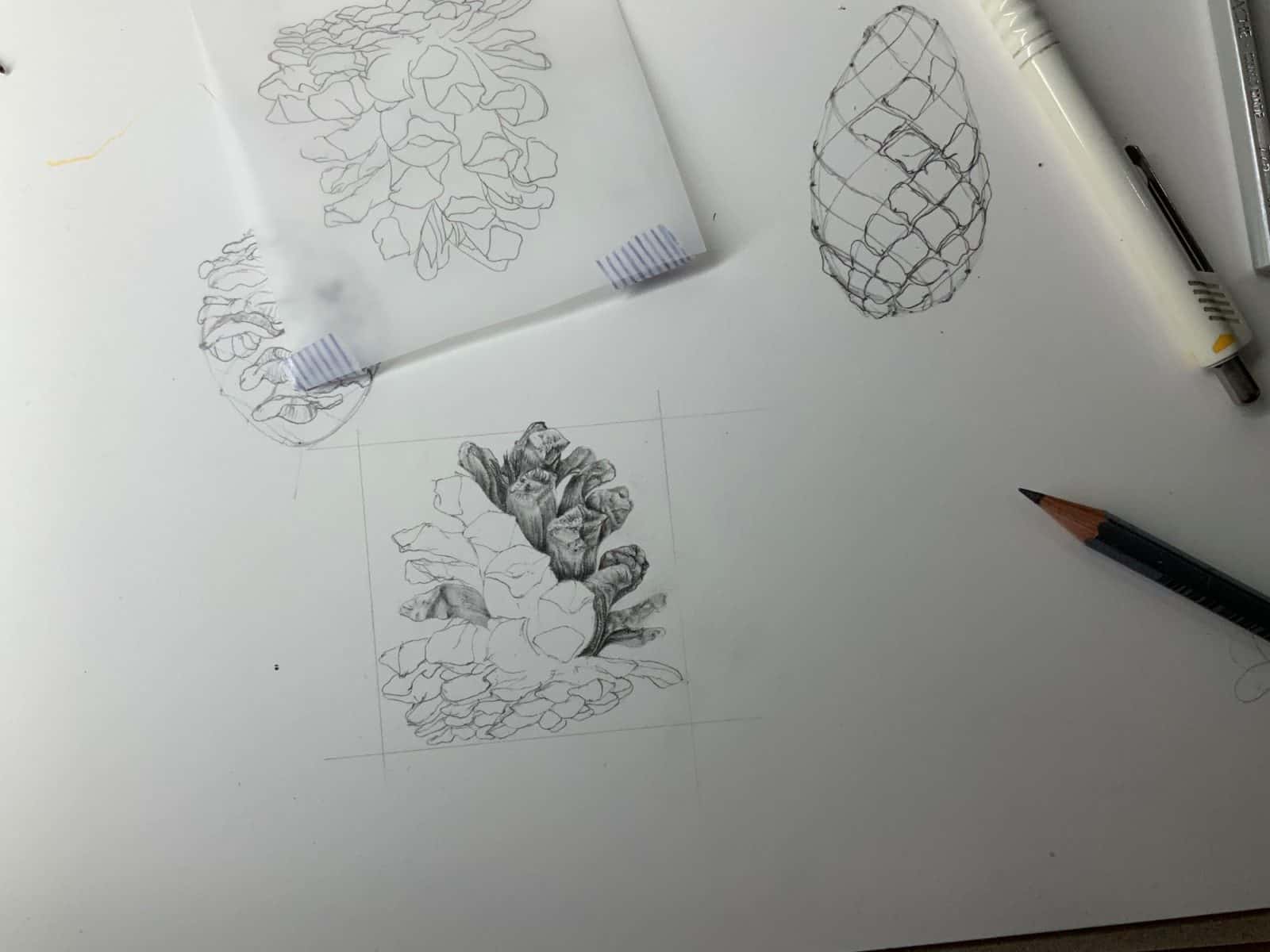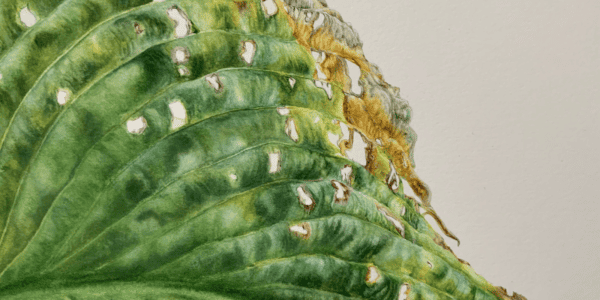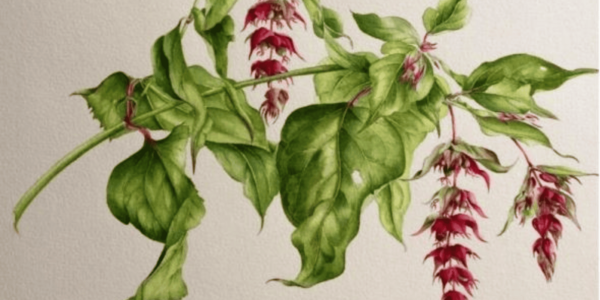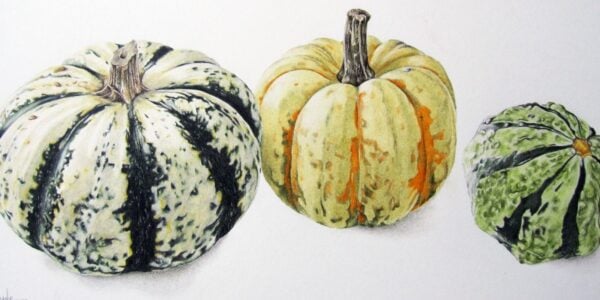How often have we stopped to marvel at the colours and textures of the natural world around us?
The pandemic has made so many of us really take time to tune in to the sights and sounds of nature, finding a sense of calm and well-being, and a curiosity in how we can go about depicting this beauty through a variety of mediums.
Dramatic colour and compositions don’t have to be ‘big and blousey’: a newly-sprouting bud of blossom about to burst open, the promise of new beginnings, or the changing colours of a leaf just before it falls from the tree I. Autumn – all have a story to tell, waiting to be interpreted by the botanical artist.
Botanical illustration and art is not a new genre, and has been used for thousands of years as a way to communicate, inform and describe the natural world.
Using nature as our inspiration, specifically focusing on botanical subjects, this course will enable you to enter into the addictive genre of botanical art and illustration. With the emphasis on essential observation and drawing skills, watercolour techniques, colour matching and composition, you will be guided through the stages of producing beautiful study pages or pieces of botanical art, whilst simultaneously allowing you to develop your own style.
This is a studio based course, and tuition will be both group and one to one. Demonstrations and discussion will continue throughout the course and individual ideas will be encouraged and developed. There will also be access to reference materials to aid and reinforce learning.
Subject materials will be made available, and sourced from the local area, though you are very welcome to bring along a botanical subject of your choice, or a botanical work-in-progress which you wish to continue to develop.
The course is aimed at both beginners and improvers; it can be extremely advantageous for those with little or no experience to work alongside painters with some expertise. The sharing of skills and knowledge is greatly encouraged and can be beneficial to all concerned.
Tutor: Dawn Wright
Dawn Wright studied Botanical Illustration for 3 years at Leicester College and has been teaching botanical art for a number of years, including at Nottingham Trent University. She is a Fellow of the Society of Botanical Artists and a member of several UK and international botanical art societies. Dawn enjoys introducing students to botanical art and is enthusiastic about raising the profile of this genre. In her own work she enjoys recreating the colours and textures which the changing seasons bring, relishing in the challenge of capturing light and drama, encouraging us to stand still and look, look and look again at the natural world around us.
Example Timetable
This is a studio-based course, tuition will be on both a group and 1:1 basis, supported by demonstrations, access to reference materials and ongoing discussions throughout the course.
Monday
Introduction, group and individual discussion about aims and objectives and timings for the week. A brief history of botanical illustration and art, including key influential artists, both historical and contemporary.
Tuesday
Select subjects, if not developing a work-in-progress. Spend time developing observational and accurate drawing skills, through initial quick sketches then moving on to more defined mark-making. We will also discuss compositions and transferring our studies ready for our final piece.
Wednesday
Spend the day exploring colour, our paints and how they perform, colour mixing and matching against our selected subjects, looking at how we can make our work ‘glow’.
Thursday and Friday
We will focus on different watercolour techniques, with plenty of practical demonstrations and exercises, allowing you to really get to grips with how you handle water and paint. You will combine all the exercises and prep work from the previous days into your final composition.
What's Included
Before You Attend
Where to meet and at what time?
Resident participants are requested to arrive for registration by 17.00 on arrival day. The course will begin after supper. Non-residents can arrive 10/15 mins before the evening meal. There will be an introductory talk at 17.00. Supper is usually at 18.30. A non-resident booking also includes dinner during your course as teaching does progress into the evening. Breakfast, for resident participants, will be from 8:00 am. The course will end on Friday at 15.00. On the final day please vacate your room by 9:00 am, storage is provided for your luggage.
What shall I bring?
Watercolour Paints
Artists’ quality preferred, recommend Winsor & Newton as can be purchased easily from high street stores or on-line art retailers such as Jackson’s, Ken Bromley, SAA, Cass Art.
- Winsor Lemon
- Winsor Yellow
- Raw Sienna
- Permanent Alizarin Crimson or Permanent Carmine
- Permanent Rose
- Winsor red OR Scarlet Lake Or Quinacridone Red
- Winsor Violet Dioxazine
- Quinacridone Magenta
- Cobalt blue
- Winsor Blue Green Shade Or Pthalo (Pthalocyanine) Blue Green Shade
- French Ultramarine
- Indanthrene Or Indanthrone Blue
- White Gouache
Brushes
I use sable ‘pointed round’ brushes. My favourite brand is Raphael Series 8408. These can be purchased from Jackson’s Art or Hobby Heaven (Avoid purchasing these from Great Art as there have been delays recently with deliveries)
Sizes 6, 4, 2 and 0.
I use 2 brushes of the same size at the same time, one to hold water and one to hold paint – by doing this I am not diluting my paint.
Whether you choose sable, sable/synthetic or synthetic, your brushes should go into a lovely sharp point. Please do not bring rigger brushes.
A small synthetic ‘flat’ brush is useful for sharpening edges and for lifting off colour to show highlights.
Paper
Good quality, hot press paper, white, minimum weight 140lb (300gsm). Paper can be bought by single sheet or in pads or gummed blocks. A couple of full sheets would be sufficient as they can be cut down to fit your final composition. The paper should be kept flat, not rolled. Please do not bring ‘rough’ paper, as it is not suitable for botanical illustration and art.
I use Arches Hot Press paper, heavyweight – 300lbs (640gsm), as I like to lay down a lot of paint and don’t wish to stretch my paper.
An alternative would be Daler Rowney The Langton Prestige smooth paper, or your preferred paper which you enjoy working on.
Other Equipment
- Sketchbook: smooth, white paper. I can recommend Daler Rowney Ebony Spiral sketchbook. Min size A4, A3 preferable.
- Water jars (2)
- White palettes or white plates – ceramic
- Pencils – 4H, 2H, HB, B, 2B
- Cotton rag/kitchen roll
- Kneadable/putty rubber AND a plastic eraser
- Low tack masking tape
- Tracing paper
- Hand-held magnifying lens, if you have one
- Travel lamp/daylight lamp – bring with you if you have one, but don’t buy specifically for this course
- Sturdy containers for your subjects/ oasis
- Craft knife
- A piece of fine grade sand paper
- Notebook – for all those tips and knowledge you’re going to acquire
Sorry this course has ended

